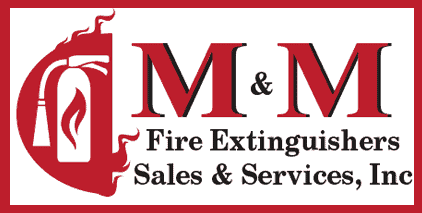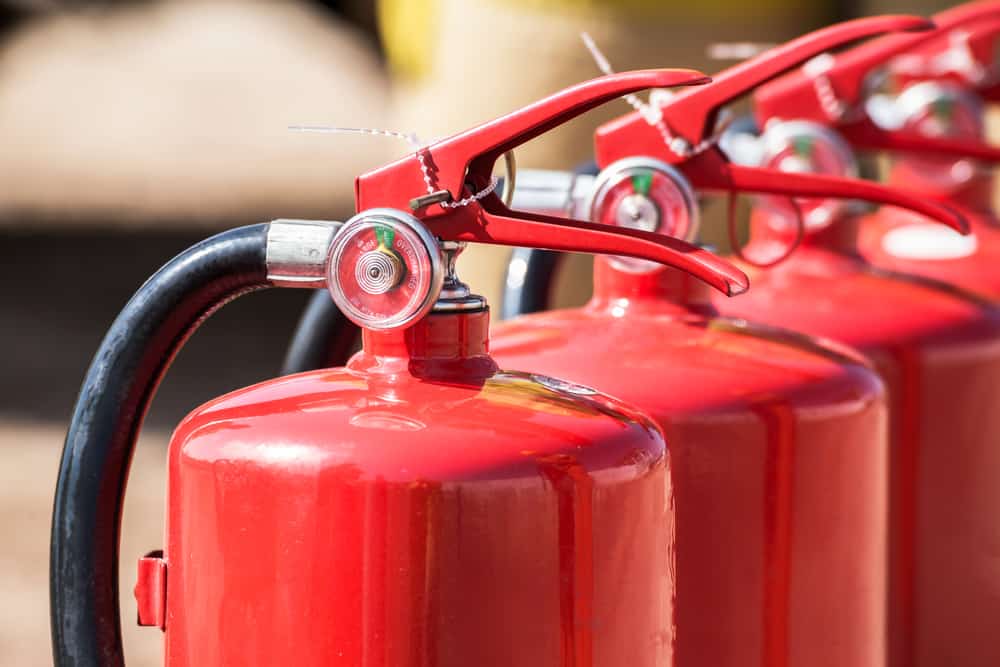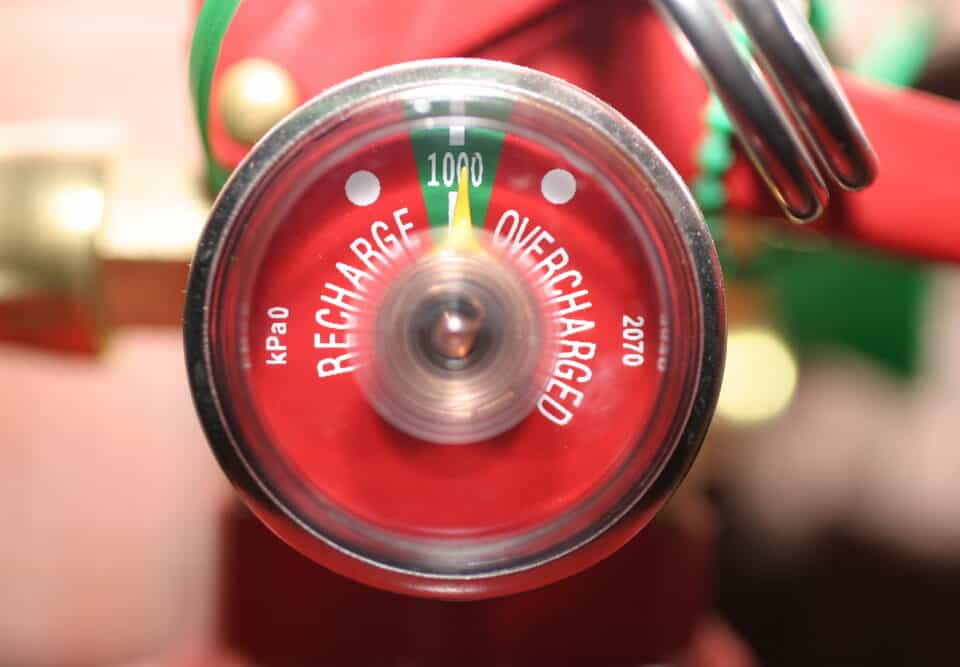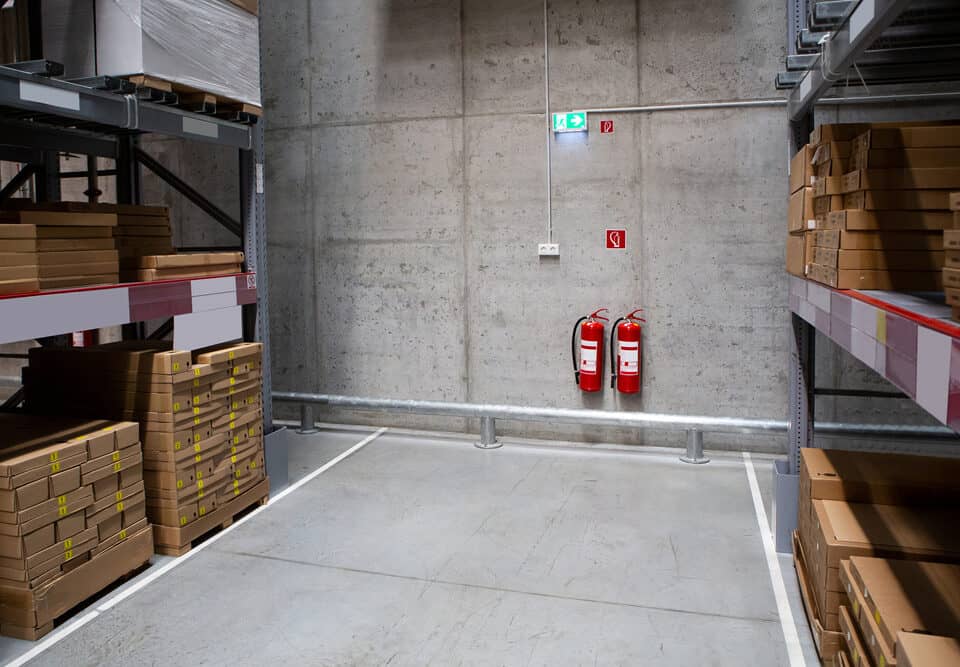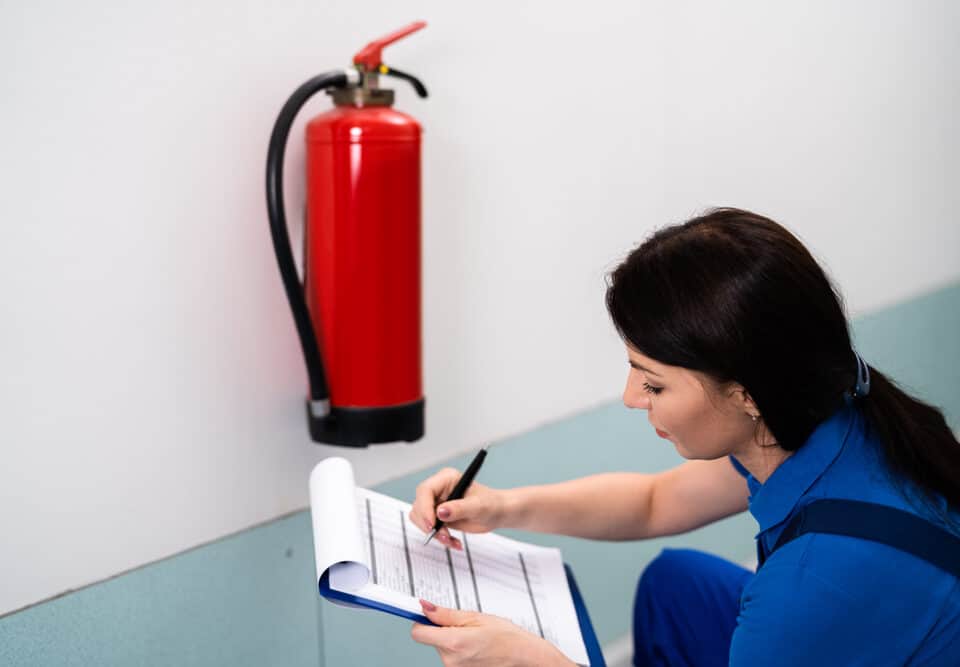
What You Need to Know About Fire Extinguisher Inspections in Nassau County, NY
September 24, 2025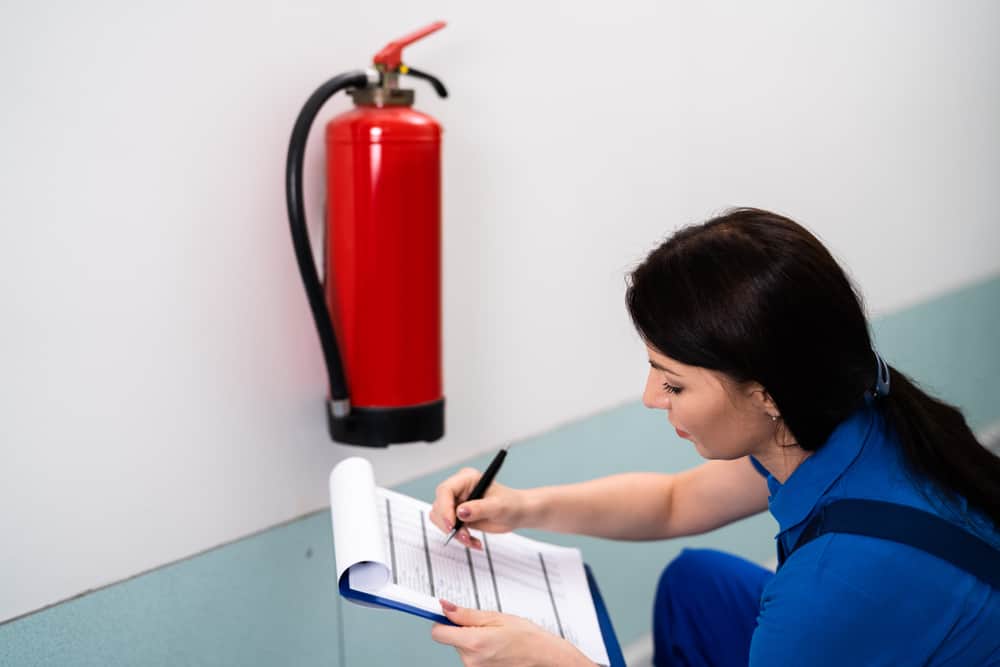
Don’t Skip Your Fire Extinguisher Inspection in Suffolk County, NY
October 8, 2025You walk into your Nassau County business thinking everything’s fine. Then the FDNY inspector arrives for a routine check and suddenly you’re facing violation notices and fines that could reach $1,000 per extinguisher. The culprit? Fire extinguisher installation mistakes that seemed minor but violate critical safety codes.
These aren’t just paperwork problems. When fire strikes, improperly installed extinguishers can mean the difference between containing a small blaze and watching your business burn. Here’s what Nassau County business owners need to know about avoiding the installation mistakes that cost the most money and create the biggest safety risks.
Wrong Mounting Height Violations in Nassau County
The most expensive mistake Nassau County businesses make is mounting fire extinguishers at the wrong height. FDNY inspectors check this first, and getting it wrong triggers immediate violations.
NFPA 10 standards require extinguisher handles to sit between 3.5 and 5 feet above the floor for units under 40 pounds. Heavier extinguishers must be mounted even lower, with handles no higher than 3.5 feet. The bottom of every extinguisher needs at least 4 inches of clearance from the ground.
These aren’t arbitrary numbers. During emergencies, people of different heights need quick access to extinguishers. Mount them too high and shorter employees can’t reach them. Too low and they become trip hazards or get damaged by floor cleaning equipment.
FDNY Height Requirements That Trip Up Most Businesses
Nassau County businesses consistently fail FDNY inspections because they ignore specific mounting requirements that seem like small details but carry big penalties.
The 4-inch ground clearance rule catches many business owners off guard. They mount extinguishers directly on floors or too close to the ground, thinking they’re making them more accessible. Instead, they’re creating code violations and potential damage from cleaning equipment, foot traffic, and moisture.
Handle height requirements vary by extinguisher weight for good reason. A 20-pound ABC extinguisher can hang with its handle at 5 feet, but a 30-pound unit needs to be lower for safe handling. When employees struggle to lift heavy extinguishers from high mounts during emergencies, response times increase and injuries can occur.
The visibility requirement is equally critical. Even properly mounted extinguishers need clear sight lines. Nassau County businesses often mount extinguishers at correct heights but behind equipment, furniture, or in corners where they’re hard to spot during emergencies. FDNY inspectors look for unobstructed access and clear visibility from normal walking paths.
Wall mounting seems straightforward, but the wrong brackets or insufficient anchoring create safety hazards. Extinguishers that fall during building vibrations or earthquakes become projectiles instead of fire protection tools. Professional installation ensures proper anchoring into wall studs or concrete with appropriate hardware for the extinguisher’s weight and the wall material.
Travel Distance Mistakes That Create Compliance Problems
Nassau County businesses lose thousands to FDNY fines by misunderstanding travel distance requirements. It’s not about how far apart extinguishers are from each other – it’s about how far anyone has to walk to reach one.
NFPA 10 mandates maximum travel distances based on fire class. Class A hazards (ordinary combustibles like paper, wood, fabric) require extinguishers within 75 feet of travel distance. Class B hazards (flammable liquids) need 50-foot maximum travel distances. Class K hazards in commercial kitchens also require 50-foot spacing.
Travel distance means the actual walking path, not straight-line distance. You measure around corners, through doorways, and along corridors where people naturally walk. A straight-line measurement of 60 feet might actually be 85 feet of travel distance when accounting for obstacles and building layout.
Many Nassau County restaurants and offices make the mistake of measuring from extinguisher to extinguisher instead of from any point in the protected area to the nearest extinguisher. Every spot in your building needs an extinguisher within the required travel distance, not just average coverage.
The layout of your space matters more than square footage. Long, narrow buildings need more extinguishers than compact spaces of the same size. Multi-level buildings require extinguishers on every floor, even if upper floors are within travel distance of ground-level units. Stairs don’t count toward travel distance because people evacuate down, not up, during fires.
Different areas of the same building might need different spacing. Your office area might only need Class A coverage with 75-foot spacing, but your storage room with flammable materials requires Class B spacing at 50 feet. Mixed-use spaces need analysis of each area’s specific hazards and appropriate extinguisher placement.
Installing Wrong Fire Extinguisher Types for Your Hazards
Nassau County businesses face serious violations when they install the wrong type of extinguisher for their specific fire hazards. A Class A extinguisher in a kitchen with grease fires creates liability and code violations, even if it’s properly mounted and inspected.
Understanding fire classes prevents costly mistakes. Class A extinguishers handle ordinary combustibles like paper and wood. Class B covers flammable liquids. Class C works on electrical fires. Class K specifically targets cooking oils and fats. Class D handles combustible metals in specialized applications.
Most businesses need ABC-rated extinguishers for general coverage, but specific areas require specialized units. Commercial kitchens must have Class K extinguishers near cooking equipment. Server rooms need Class C units for electrical fires. Manufacturing facilities might need Class D for metal fires.
Commercial Kitchen Fire Extinguisher Requirements
Nassau County restaurants and commercial kitchens face the strictest fire extinguisher requirements, and mistakes here carry the heaviest penalties and highest safety risks.
Class K extinguishers are mandatory within 30 feet of commercial cooking equipment. These aren’t suggestions – they’re FDNY requirements. Using ABC extinguishers near fryers and grills creates violations because dry chemical agents can spread burning grease and make fires worse.
The wet chemical agent in Class K extinguishers creates a barrier that prevents re-ignition of cooking oils. This chemistry makes them essential for commercial kitchens, but useless for other fire types. You need both Class K units for cooking areas and ABC units for general coverage in dining rooms, storage areas, and offices.
Placement in kitchens requires careful planning. Extinguishers must be accessible during fires but protected from cooking heat and grease splatter. They can’t be directly above fryers where heat might damage them or make them too hot to handle safely. Side-wall mounting near exits provides accessibility without heat exposure.
Many Nassau County restaurants make the mistake of thinking one large Class K extinguisher covers their entire kitchen. FDNY codes require coverage based on cooking equipment type and quantity. Large commercial kitchens might need multiple Class K units plus ABC extinguishers for comprehensive protection.
Professional kitchen fire suppression systems don’t eliminate the need for portable extinguishers. Hood systems protect cooking equipment, but portable units handle fires that start elsewhere in kitchens – electrical panels, storage areas, or dining rooms. Both systems work together for complete protection.
Office and Retail Space Fire Extinguisher Selection
Nassau County offices and retail spaces seem simpler than commercial kitchens, but they have specific requirements that catch many business owners off guard.
ABC-rated extinguishers provide the most versatile coverage for typical office environments. They handle paper fires, electrical equipment, and small amounts of flammable liquids like cleaning supplies. The dry chemical agent works on multiple fire types, making them cost-effective for general coverage.
Size matters for office environments. 5-pound ABC extinguishers work for small offices, but larger spaces need 10 or 20-pound units. The larger size provides more extinguishing agent and longer discharge time, but requires proper mounting to ensure employees can handle them safely during emergencies.
Retail spaces with specific hazards need additional considerations. Clothing stores with large fabric inventories might benefit from water-based extinguishers that won’t leave residue on merchandise. Electronics retailers need extinguishers that won’t damage sensitive equipment with corrosive agents.
Storage areas within office buildings often contain different hazards than the main workspace. Janitorial closets with cleaning chemicals might need different coverage than paper storage rooms. Loading docks where delivery trucks park require consideration of vehicle fire hazards and fuel spills.
Many Nassau County businesses make the mistake of buying extinguishers from home improvement stores instead of fire protection companies. Residential-grade extinguishers don’t meet commercial code requirements and won’t pass FDNY inspections. Commercial extinguishers come with proper certification tags and meet stricter performance standards.
Professional assessment ensures you get the right type, size, and quantity of extinguishers for your specific business hazards. Fire protection companies understand local codes and can design systems that provide comprehensive coverage while minimizing costs and maintenance requirements.
Ensuring Code Compliance and Professional Installation
Avoiding fire extinguisher installation mistakes in Nassau County requires understanding both FDNY requirements and NFPA standards. The consequences of getting it wrong – fines, violations, and compromised safety – are too serious to leave to guesswork.
Professional installation ensures compliance with all applicable codes while providing the protection your business needs. Certified technicians understand the nuances of different building types, occupancy classifications, and specific hazard requirements that determine proper extinguisher selection and placement.
Regular inspections and maintenance keep your fire protection system compliant and functional. Monthly visual checks and annual professional servicing aren’t just good practice – they’re legal requirements that protect your business from violations and ensure equipment works when you need it most.
At M&M Fire Extinguishers Sales & Services, Inc., we provide expert fire extinguisher installation and service throughout Nassau County. Our certified technicians deliver comprehensive solutions that keep your business safe and compliant with all FDNY requirements.
